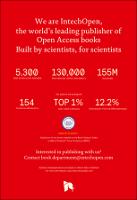Chapter The Highest Geomagnetic Storms of the Solar Cycle Observed at Ground Level
Author(s)
Navia, C. E.
Augusto, Carlos
de Oliveira, Marcel N.
Language
EnglishAbstract
We report two ground-level observations, of geomagnetic storms of different origins; they are among the highest geomagnetic storms, in the solar Cycle 24. The first is St. Patrick’s Day storm on March 17, 2015, originated by the impact on Earth’s atmosphere of coronal mass ejections (CMEs), the storm reaching the condition of G4 (severe) level, in the NOAA geomagnetic scale. The second included the major geomagnetic storm whose origin is attributed to the interaction with the Earth of a High-Speed Stream (HSS) ahead of a positive polarity coronal hole on October 7, 2015. This storm reached the condition G3 (strong) level. We give emphasis to observations detected by the New-Tupi muon telescopes, located at sea level in Brazil (22.53° S, 43.13° W). We present a study of these observations in correlation with observations reported by multipoint space-based measurements, such as the ACE at Lagrange Point L1 and the geostationary GOES weather satellite, including two global geomagnetic indices and several ground-based detectors. Some considerations on the influence of these geomagnetic storms in the Earth weather are reported.
Keywords
solar physics, geomagnetic storms, space weather, particle detectorsDOI
10.5772/intechopen.75688Publisher
InTechOpenPublisher website
https://www.intechopen.com/Publication date and place
2018Classification
Climate change


 Download
Download